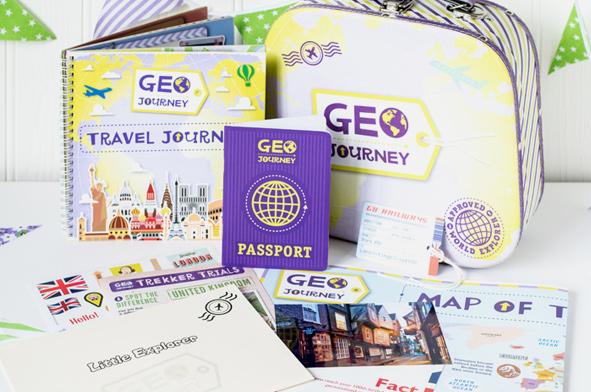Mini Trampolines for Kids with Sensory Needs
The Benefits of Mini Trampolines for Children with Sensory Needs
In recent years, mini trampolines have emerged as not just a source of entertainment but as a beneficial tool for children with sensory needs. These compact and versatile pieces of equipment offer more than just physical exercise; they provide therapeutic benefits, especially for children with sensory processing issues, Autism Spectrum Disorder (ASD), and Attention Deficit Hyperactivity Disorder (ADHD).
Here at Geo Journey, we've been exploring the many ways in which mini trampolines can support the sensory, emotional, and physical development of children, along with practical advice for parents on choosing the right trampoline to meet their child's needs.

Understanding Sensory Needs in Children
Who May Benefit?
Children with sensory needs often find the world overwhelming due to the way they process sensory information. This category broadly includes children with Autism, ADHD, and sensory processing disorder (SPD). These children might be hyper-responsive (overly sensitive) or hypo-responsive (under-sensitive) to sensory inputs, affecting their emotional regulation, physical actions, and social interactions.
The Role of Sensory Play
Sensory play is crucial for children with sensory needs. It helps them regulate their internal sensory environment, making them more adaptable and comfortable in the external world. Mini trampolines, with their unique blend of physical activity and sensory input, serve as an excellent tool for sensory play.
Mini Trampolines and Their Benefits
Physical Health
Jumping on a mini trampoline, often referred to as rebounding, offers a full-body workout that improves strength, coordination, and balance. It's a fun way to encourage children to engage in physical activity, which is essential for their overall health and well-being.
Sensory Integration
For children with ASD or SPD, a mini trampoline can be a sanctuary where they control the intensity and type of sensory input they receive. The rhythmic motion of jumping can help regulate their sensory system, reducing instances of sensory overload and improving focus.
Emotional Regulation and ADHD
Jumping on a trampoline provides an outlet for excess energy, which is particularly beneficial for children with ADHD. The physical activity helps in the release of endorphins, the body's natural mood elevators, promoting a sense of calm and reducing symptoms of anxiety and depression.
Choosing the Right Mini Trampoline
Safety Features
Safety is paramount when selecting a mini trampoline for children. Look for models with a sturdy frame, secure handlebars (for younger children), and a safety net or enclosure. Additionally, ensure the trampoline has a non-slip mat and is designed to minimize the risk of injury.
Age and Weight Considerations
Mini trampolines come with specific age and weight guidelines. It's crucial to choose a trampoline that's appropriate for your child's age, weight, and developmental stage to ensure their safety and enjoyment.
Indoor vs. Outdoor Use
Consider whether the trampoline will be used indoors or outdoors, as this will influence the size and type of trampoline you choose. Indoor trampolines are typically smaller and might have additional features like foldability for easy storage.
Practical Tips for Parents
Supervision and Safety
Always supervise children while they are using the trampoline, regardless of their age or the trampoline's safety features. Establish rules for safe use, such as one jumper at a time and no risky manoeuvres.
Incorporating Into Daily Routine
For children with sensory needs, including those with Autism and ADHD, integrating trampoline time into their daily routine can provide structure and help with sensory regulation. This regular physical activity can improve sleep patterns, reduce anxiety, and enhance focus for other tasks.
Sensory Integration Techniques
Parents and therapists can use mini trampolines as part of a broader sensory integration strategy. For example, varying the jumping activities, using weighted vests during jumping, or incorporating music can all enrich the sensory experience and meet specific sensory needs.
Our Conclusions on Finding the Best Trampolines for Kids with Sensory Needs
Mini trampolines offer a unique combination of fun, exercise, and therapeutic benefits for children with sensory needs. They can be a valuable tool for helping children with Autism, ADHD, and sensory processing disorders to navigate their sensory world more effectively.
When choosing a mini trampoline, safety, age appropriateness, and the specific needs of the child should be the primary considerations. By integrating this engaging form of physical activity into their routine, children with sensory needs can experience improved sensory integration, emotional regulation, and overall well-being. With the right approach, mini trampolines can be a joyful and beneficial addition to any child's life.
Choose an adventure...
















